In 2008 I had the privilege of undertaking a Winston Churchill Travelling Fellowship. This enabled me to spend six weeks in North America, Sweden and the Czech Republic. It was a once-in-a-life time opportunity. An old university friend who lives in Seattle advised me to visit KapKa Cooperative School. At the time of my visit it was an infant school. Since then it has moved site and become a full-blown K-G5 elementary school. For more information have a look at their informative website. The photos and text capture the previous site and its creative outdoor space.
In terms of artwork, their former school grounds were superb. It is evident that children had been involved in the artwork which reflects local culture, environment and the children’s interests. The school is all about experiential learning that fosters critical creative thinking.

On closer inspection, look at the school sign outside the school. It makes a change from a standard formal one:
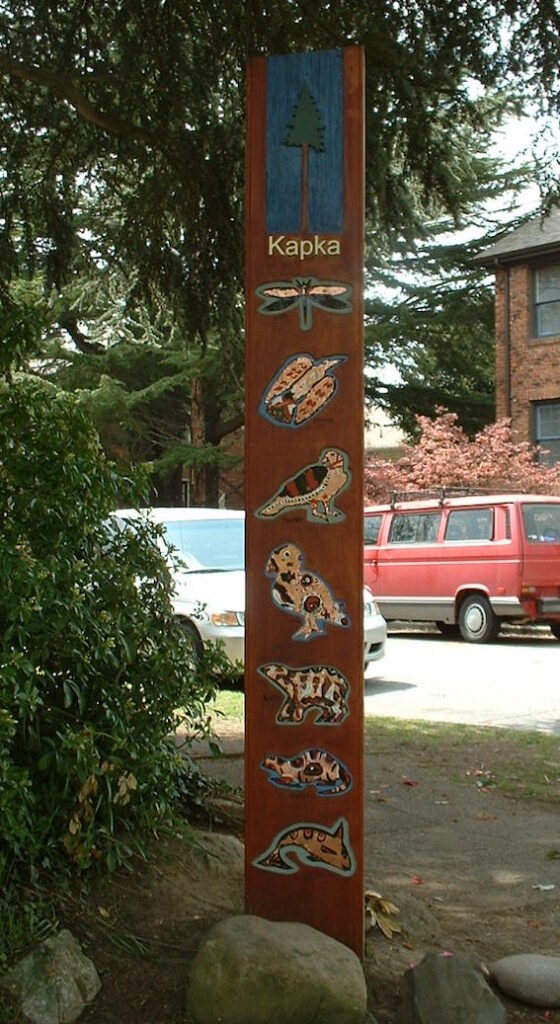
Even the mail box is unique. Salmon feature strongly in the school’s work reflecting the community-wide emphasis across Seattle in restoring the salmon to all the rivers in the watershed.
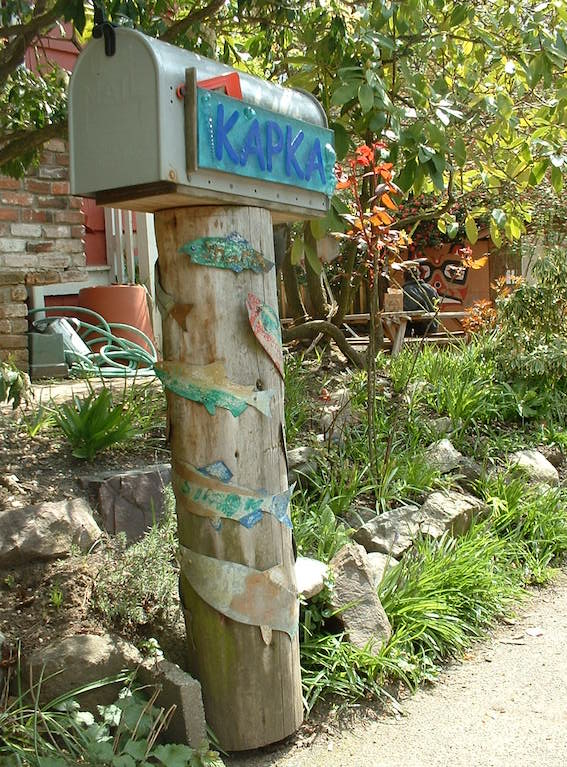
The sidewalk is used by the school children. This is simple way for a school to reach out to the local community. There’s a wee garden that the children look after. At break times, this area was also used for play by the children – two gates were opened so this could happen and the children were trusted to stay on the sidewalk.
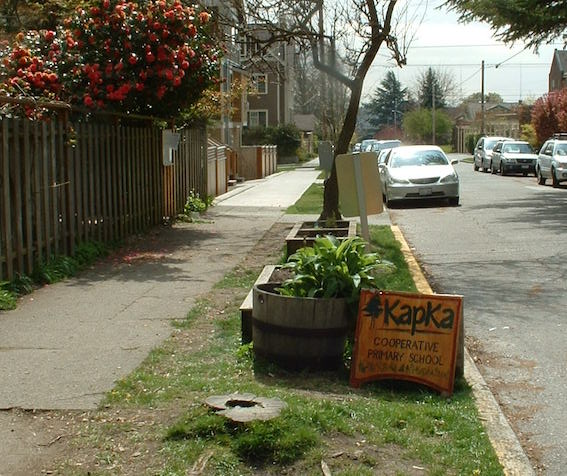
The entrance to a school sends a strong hidden message about the ethos within. I think KapKa had a welcoming feel. Within the grounds, there were many delights to behold:
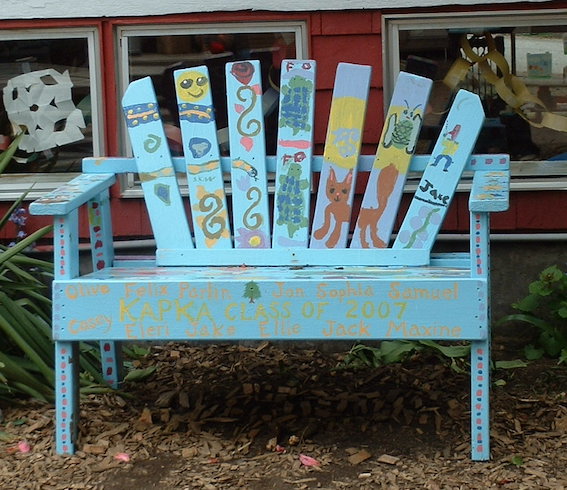
This bench was painting by the oldest class of children before they left. Wouldn’t it be great if all schools had such benches!
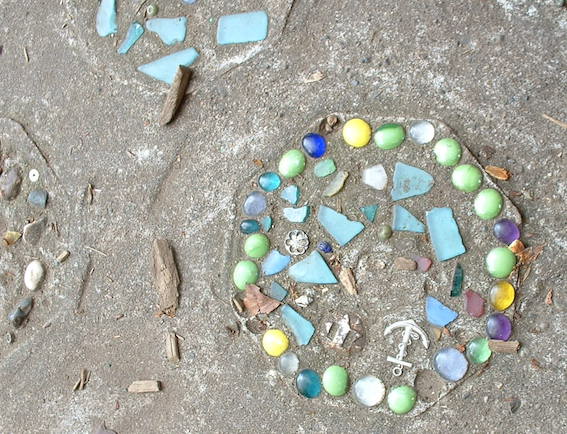
Little mosaics have been made by children and cemented into the ground near the back entrance.
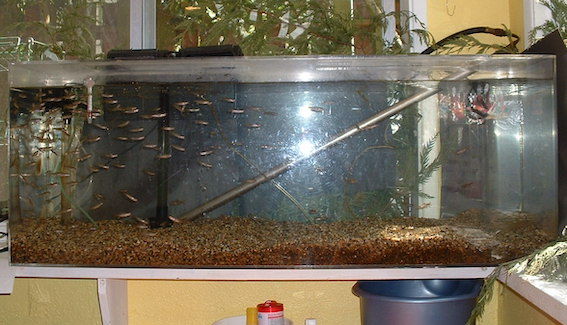
Seattle is rightly proud of its Salmon in Schools programme. KapKa is involved in raising salmon every year. Inside, the tank of salmon being raised from eggs or fry. Outside the salmon were found on the climbing frame.
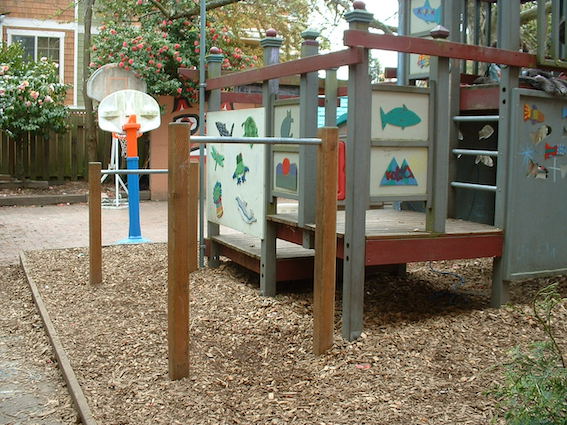
The detail is great and you can see the children’s involvement in the process of creating the boards.
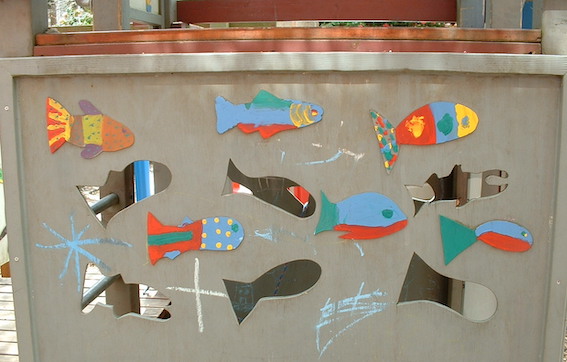
As you’ve probably worked out, the outdoor area is small. However, signs of children’s creativity are everywhere. When I visited, the children disappeared outside at one point to continue an art lesson that had begun inside. There was no fuss – I turned my back for a moment and the class had gone!
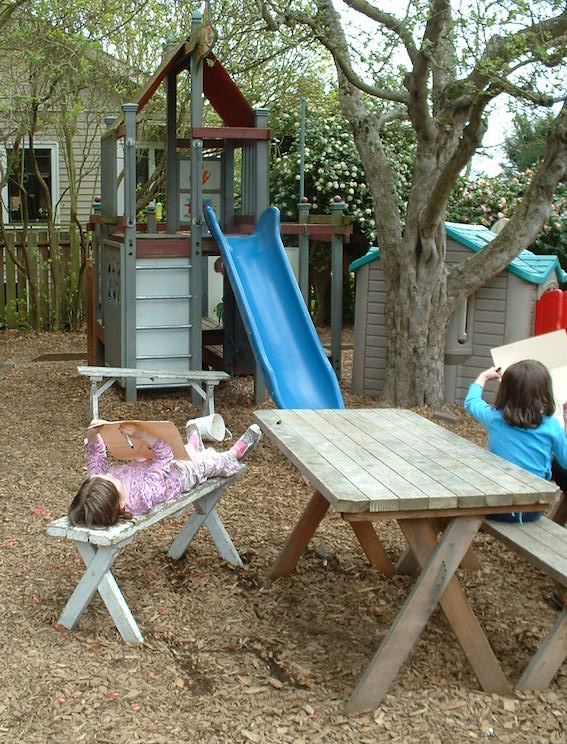
Look at the bird feeder! This is typical of the loads of tiny pieces of art work all around the outdoor space.
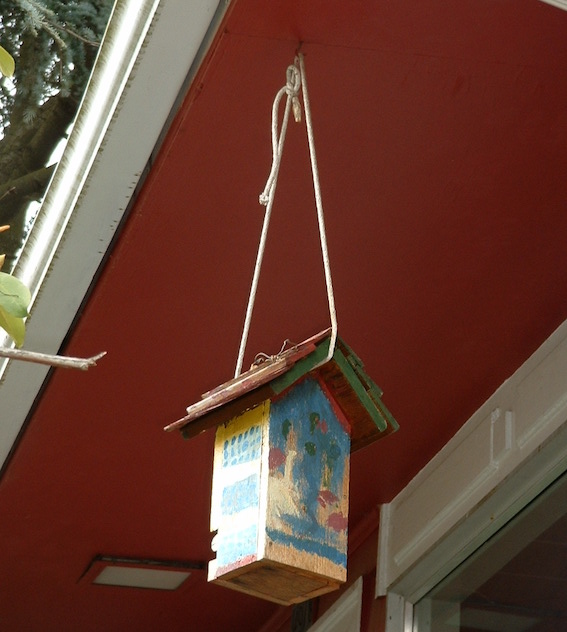
Now, you may be wondering about the inside. It’s equally beautiful. As this is an outdoor blog, I’m just sticking to the outdoor area. But to give you a flavour, imagine working at this desk:

And how about a classroom with bars on the ceiling so you could swing and hang from them – that’s a great use of space for play.
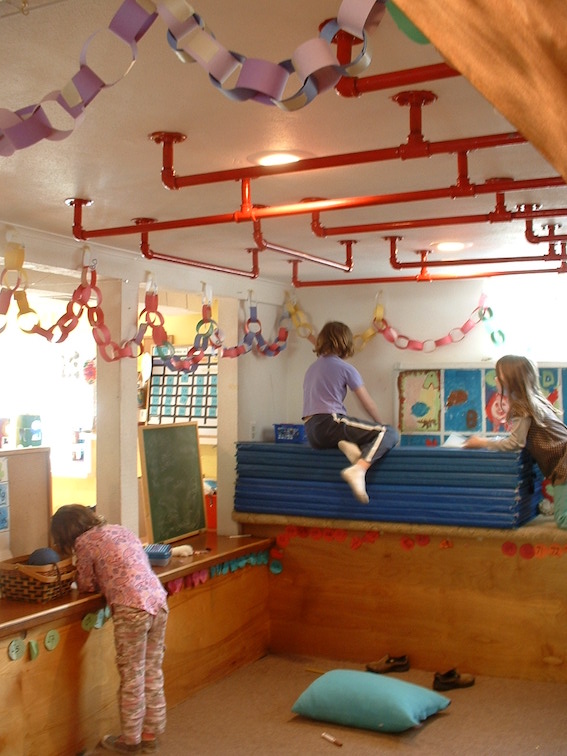
Throughout the indoor space there were lots of nooks and crannies for the children to use.

Years later, I’m still left inspired by my visit to KapKa. Children and adults need beautiful, creative places to live and work where the contributions of children are truly valued and demonstrated. I hope you have enjoyed the KapKa tour.
This blog post was originally published in March 2010.




















Thanks for sharing about KapKa – I used to live in Seattle and I iften heard about KapKa from colleagues. Art is definitely not just for inside!
Hello Allie
Thanks for visiting! I just loved the indoor-outdoor approach to art. The day I visited some of the Elder children were outside for an art lesson looking at the trees as an example of negative space. Fantastic!
Best wishes
Juliet
Hi Juliet, we enjoyed having you visit our school and it’s lovely to see your photos as well. One point of clarification would be that we call ourselves a primary school. It’s great to read about the other places your travels took you! All our best, Signe at KapKa Cooperative School
Thanks Signe for your thoughts and feedback. I do apoloise for referring to KapKa as an infant school – here in Scotland, primary schools are for 4-12yrs olds so it was to avoid confusion for the British readers! I’m just sorry that the posting doesn’t do justice to all the other good things about KapKa and how its approach develops leadership and creativity and a host of other positive things. Best wishes!